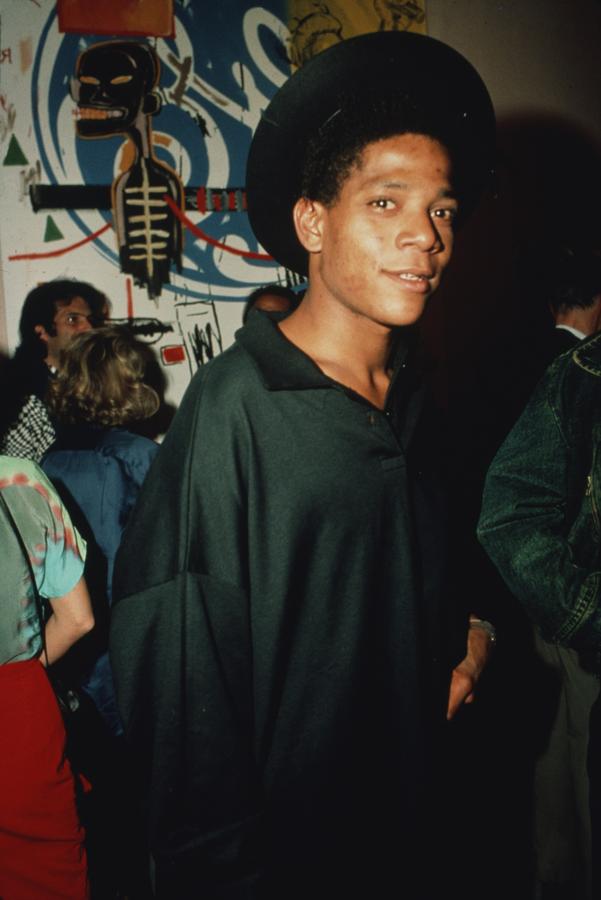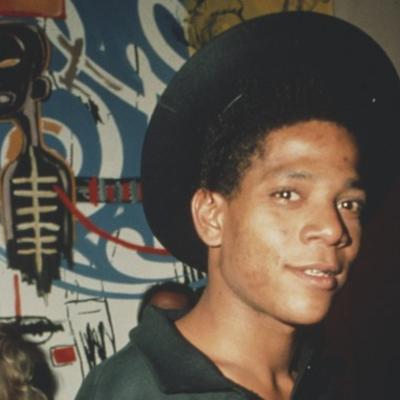Jean-Michel Basquiat at a Glance
Jean-Michel Basquiat: From Graffiti to Global Icon – His Life, Art, and Net Worth
Early Life and Influences
Jean-Michel Basquiat, born on December 22, 1960, in Brooklyn, New York City, emerged as a pivotal figure in the neo-expressionist movement of the 1980s. His background, a rich tapestry of Haitian and Puerto Rican heritage, profoundly influenced his art. Basquiat’s mother, Matilde, introduced him to the world of art at a young age, taking him to museums and enrolling him as a junior member at the Brooklyn Museum of Art. This early exposure ignited a passion that would define his life. At the tender age of four, he demonstrated an exceptional aptitude for language, learning to read and write. His formal education included Saint Ann’s School, where he co-authored a children’s book, and later, Edward R. Murrow High School and City-As-School, an alternative institution that fostered his artistic sensibilities. A childhood accident, a car collision at seven years old, resulted in a broken arm and internal injuries, including a splenectomy, which further shaped his perspective. Basquiat’s early life, marked by both artistic inspiration and personal challenges, laid the foundation for his distinctive artistic voice.
Street Art Breakthroughs: SAMO and Beyond
In 1978, Basquiat, alongside his friend Al Diaz, embarked on a transformative journey into the world of street art. They adopted the pseudonym SAMO, an acronym for “Same Old Shit,” and began spray-painting thought-provoking graffiti on buildings across Lower Manhattan. These satirical slogans, infused with social commentary and artistic flair, quickly garnered media attention. The Village Voice featured their work in December 1978, marking a significant milestone in their burgeoning careers. Basquiat’s artistic presence extended beyond street art; he made regular appearances on the public-access television show “TV Party,” and in 1979, he co-founded the noise rock band Test Pattern. His artistic endeavors were not confined to public spaces; he transformed his living environment into a canvas, painting on the floors, walls, and furniture of his East Village apartment. Simultaneously, he created and sold postcards with his friend Jennifer Stein. In October 1979, Basquiat presented montages of his SAMO work at an open gallery. This pivotal period solidified Basquiat’s reputation as a revolutionary artist who blurred the lines between fine art and street culture, paving the way for his meteoric rise in the art world.
Gallery Art and Rising Fame
Basquiat’s transition from street art to the gallery scene was swift and decisive. His inclusion in the 1980 “Times Square Show,” a multi-artist exhibition, marked a significant turning point. The following year, he showcased his work at the “New York/New Wave” exhibition at MoMA PS1, further solidifying his place in the contemporary art landscape. His talent caught the eye of Italian art dealer Emilio Mazzoli, who organized a show for Basquiat at his gallery in Modena, Italy, in 1981. Another group show followed, orchestrated by Annina Nosei. By early 1982, Basquiat had his first American solo exhibition at Nosei’s gallery. That same year, he achieved the distinction of being the youngest artist to participate in “documenta,” a prestigious art exhibition in Germany. Basquiat continued to exhibit his work in galleries across the United States and internationally, including Los Angeles. In 1983, upon his return to New York, he became the youngest artist to participate in the Whitney Biennial exhibition. This rapid ascent underscored Basquiat’s extraordinary talent and the growing demand for his work.

(Photo by Rose Hartman/Getty Images)
Collaborations with Andy Warhol
Basquiat’s artistic journey intertwined with that of Andy Warhol, the celebrated pop artist. They first met before Basquiat’s street art fame and forged a creative partnership. Together, they produced a series of collaborative paintings, including “Olympics,” “Taxi, 45th/Broadway,” and “Zenith.” Although their joint exhibition received mixed reviews from critics, their collaboration was a significant event in the art world. The partnership was further complicated by their clashing personalities and the pressure of maintaining their individual artistic identities. Basquiat, in the mid-1980s, reached a peak earning $1.4 million a year. This level of success came with a cost, however. Despite his professional achievements, Basquiat struggled with his mental health and turned to substance abuse, including excessive use of cocaine and heroin.
Final Years and Tragic Demise
The mid-1980s marked both the pinnacle and the decline of Basquiat’s career. In 1986, he held exhibitions in Los Angeles, Atlanta, Salzburg, the Ivory Coast, and Hannover. However, his mental health deteriorated further, and his drug addiction deepened. He became increasingly reclusive. Despite these challenges, Basquiat continued to showcase his work in 1987, with exhibitions in Tokyo, New York, and Paris. His final exhibitions took place in Paris, Düsseldorf, and New York in 1988. Despite multiple attempts at sobriety, Basquiat succumbed to a heroin overdose in August 1988 at his Manhattan home. He was found unresponsive by his girlfriend, Kelle Inman. His untimely death at the age of 27 cut short a promising career, but it solidified his place as an icon.
Artistry and Legacy
Jean-Michel Basquiat’s art defied easy categorization, blending drawing, painting, poetry, text, and historical information to create powerful commentaries on race, poverty, segregation, class struggle, colonialism, and the Black experience. His work often featured recurring motifs and symbols, reflecting his personal experiences and social observations. His style, marked by raw emotion, fragmented figures, and bold colors, was immediately recognizable. In his short but prolific career, he produced around 1,500 drawings, 600 paintings, and numerous sculptures and mixed-media works, leaving behind a vast body of work that continues to captivate audiences and inspire artists worldwide. Basquiat’s work remains an enduring testament to his artistic vision and his ability to challenge conventional norms.
Jean-Michel Basquiat’s Net Worth Today
At the time of his death in 1988, Jean-Michel Basquiat’s net worth, considering the present value of his artwork, was estimated at $10 million. However, his lifestyle at the time was far from extravagant. Today, Basquiat’s paintings are some of the most valuable modern artworks globally. The prices fetched by his works continue to break records. In May 2017, an “Untitled” Basquiat painting sold for a staggering $110.5 million to a Japanese collector, a record price for an American artist at the time. This painting, a stunning example of his signature style, further cemented his legacy as a major figure in the art world. His impact is further recognized through a commemorative plaque in Manhattan and a public square named in his honor in Paris’s 13th arrondissement, ensuring his memory and influence will endure for generations to come.

